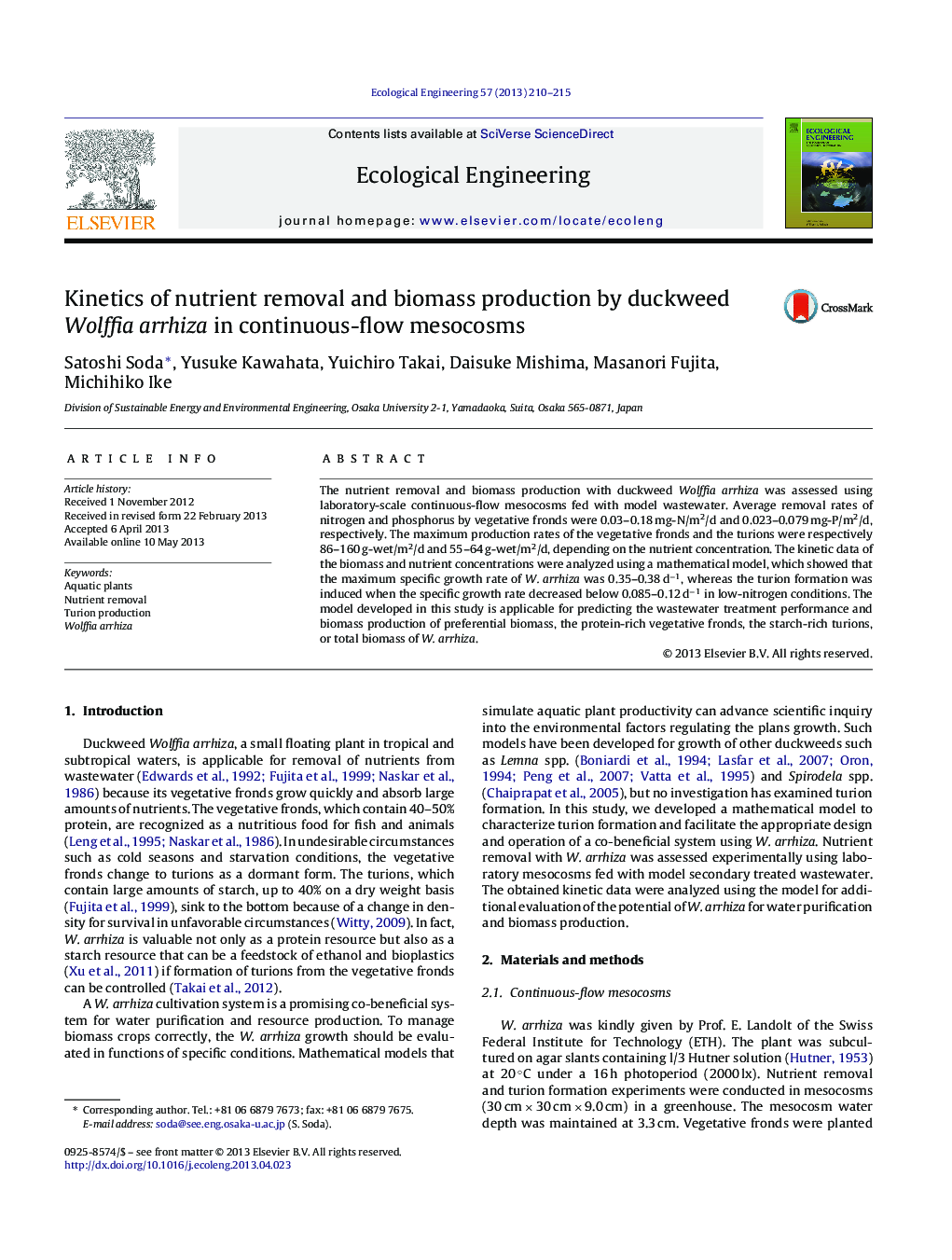| Article ID | Journal | Published Year | Pages | File Type |
|---|---|---|---|---|
| 6302612 | Ecological Engineering | 2013 | 6 Pages |
Abstract
The nutrient removal and biomass production with duckweed Wolffia arrhiza was assessed using laboratory-scale continuous-flow mesocosms fed with model wastewater. Average removal rates of nitrogen and phosphorus by vegetative fronds were 0.03-0.18Â mg-N/m2/d and 0.023-0.079Â mg-P/m2/d, respectively. The maximum production rates of the vegetative fronds and the turions were respectively 86-160Â g-wet/m2/d and 55-64Â g-wet/m2/d, depending on the nutrient concentration. The kinetic data of the biomass and nutrient concentrations were analyzed using a mathematical model, which showed that the maximum specific growth rate of W. arrhiza was 0.35-0.38Â dâ1, whereas the turion formation was induced when the specific growth rate decreased below 0.085-0.12Â dâ1 in low-nitrogen conditions. The model developed in this study is applicable for predicting the wastewater treatment performance and biomass production of preferential biomass, the protein-rich vegetative fronds, the starch-rich turions, or total biomass of W. arrhiza.
Related Topics
Life Sciences
Agricultural and Biological Sciences
Ecology, Evolution, Behavior and Systematics
Authors
Satoshi Soda, Yusuke Kawahata, Yuichiro Takai, Daisuke Mishima, Masanori Fujita, Michihiko Ike,
